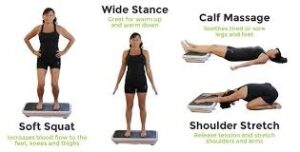Vibration exercise machines have gained popularity for their potential benefits in fitness and rehabilitation. These machines use vibrations to stimulate muscles, aiming to enhance strength, flexibility, and circulation. However, a common question among users is whether health insurance covers these devices. This article explores the factors influencing insurance coverage for vibration exercise machines and offers guidance on navigating this aspect of health benefits.
Understanding Vibration Exercise Machines
Vibration exercise machines are designed to transmit vibrations throughout the body while the user performs exercises or stands still. The vibrations are thought to engage more muscle fibers than traditional exercises, potentially improving workout efficiency and aiding in muscle recovery. They are often used for:
- Enhancing Muscle Strength: The vibrations may increase muscle contractions, which can contribute to muscle growth and strength.
- Improving Flexibility and Balance: Regular use might improve flexibility and balance, beneficial for overall mobility.
- Aiding Rehabilitation: For some, these machines are used as part of a rehabilitation program to recover from injuries or surgery.
Insurance Coverage Considerations
- Medical Necessity: Health insurance companies typically cover items deemed medically necessary. To qualify, vibration exercise machines would need to be prescribed by a healthcare provider for a specific medical condition or rehabilitation. Coverage is more likely if the machine is part of a prescribed treatment plan rather than a general fitness tool.
- Documentation and Prescription: Obtaining coverage usually requires proper documentation. This includes a prescription or recommendation from a healthcare professional detailing the medical need for the vibration machine. Additionally, medical records and treatment plans may be needed to support the claim.
- Insurance Policy Variations: Insurance policies vary widely. Some may offer partial coverage or reimbursements for medical devices used in rehabilitation, while others might not cover such devices at all. It’s important to review the specific terms and conditions of your policy or consult with your insurance provider to understand what is covered.
- Pre-Authorization: In some cases, insurance companies may require pre-authorization before covering the cost of medical equipment. This involves submitting a request to the insurance company, detailing the medical necessity and expected benefits of the vibration exercise machine.
- Alternative Coverage: If insurance coverage is not available, consider alternative options such as flexible spending accounts (FSAs) or health savings accounts (HSAs). These accounts may allow you to use pre-tax dollars for eligible health-related expenses, potentially including vibration exercise machines if deemed eligible.
Steps to Take
- Consult Your Healthcare Provider: Discuss with your healthcare provider whether a vibration exercise machine is suitable for your condition and if they can provide a prescription or recommendation.
- Review Your Insurance Policy: Carefully examine your health insurance policy or contact your insurance provider to understand the coverage details and requirements for medical equipment.
- Prepare Documentation: Gather necessary documentation, including medical records, a prescription from your healthcare provider, and any other required forms.
- Submit a Claim: If your insurance policy covers the device, follow the claims process outlined by your insurance provider. This may include submitting receipts, medical documentation, and a prescription.
- Explore Alternative Funding: If insurance coverage is not available, consider using FSAs or HSAs to fund the purchase of a vibration exercise machine.
Conclusion
Health insurance coverage for vibration exercise machines can be complex and varies by policy. Understanding the factors influencing coverage, such as medical necessity and documentation requirements, is crucial. By consulting with your healthcare provider and insurance company, you can better navigate the process and explore potential options for obtaining coverage or alternative funding for these devices.



